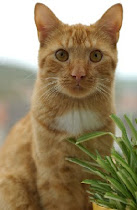The Daily Interlake, Kalispell, MT on Wed. Dec. 14, 2011
Take Extra Care with Pets in Cold Weather
With winter weather here, the Flathead County Animal Shelter urges pet owners to take precautions to ensure the safety of their pets. Help keep your pets safe during cold weather by following these simple guidelines:
* Don’t leave pets outdoors when the temperature drops. Dogs and cats are safer indoors, except when taken out for supervised exercise. Regardless of the season, short-haired, very young or old dogs and all cats should never be left outside without supervision.
* Pets who spend a lot of time outdoors need more food in the winter because keeping warm depletes energy. Routinely check your pet’s water dish to make certain the water is fresh and unfrozen. Use plastic food and water bowls rather than metal.
* Wind chills can threaten a pet’s life. If your dog spends significant time outdoors, he or she must be protected by a dry, draft-free doghouse that is large enough to allow the dog to sit and lie down comfortably, but small enough to hold in his or her body heat. The house should be turned to face away from the wind and the doorway should be covered with waterproof burlap or heavy plastic.
* Warm engines in parked cars attract cats and small wildlife that may crawl under the hood. To avoid injuring any hidden animals, bang on your car’s hood to scare them away before starting your engine.
* Salt and chemicals used to melt snow and ice can irritate the pads of your pet’s feet and may be harmful if ingested. Wipe your pet’s feet with a damp towel before your pet licks them to remove snow packed between your pet’s paws. Pet-friendly ice melts are available at many pet supply stores or online.
* Antifreeze is a deadly poison, but it has a sweet taste that can attract animals and children. Wipe up spills and store antifreeze (and all household chemicals) out of reach. Consider using antifreeze coolant made with propylene glycol, which is less toxic in small amounts than traditional ethylene glycol antifreeze.
* If you’re feeding homeless cats, be sure to provide an insulated shelter for them. Information about building a shelter, spaying and neutering and more is available at http://www.humanesociety.org/issues/feral_cats or contact the Spay and Neuter Task Force.
* During the winter months, the happiest dogs are those who are taken out frequently for walks or exercise but kept inside the rest of the time.
For more information or any questions, contact the Flathead County Animal Shelter at 752-1310 or go to www.flathead.mt.gov/animal. Shelter hours are Tuesday through Friday, noon to 6 p.m. and Saturday, 11 am to 4 p.m.
###
Today's article was suggested by Kitty Grass and Catnip and Lifes Abundance Cat Food and Bonito Flakes Kitty Treats.
***
